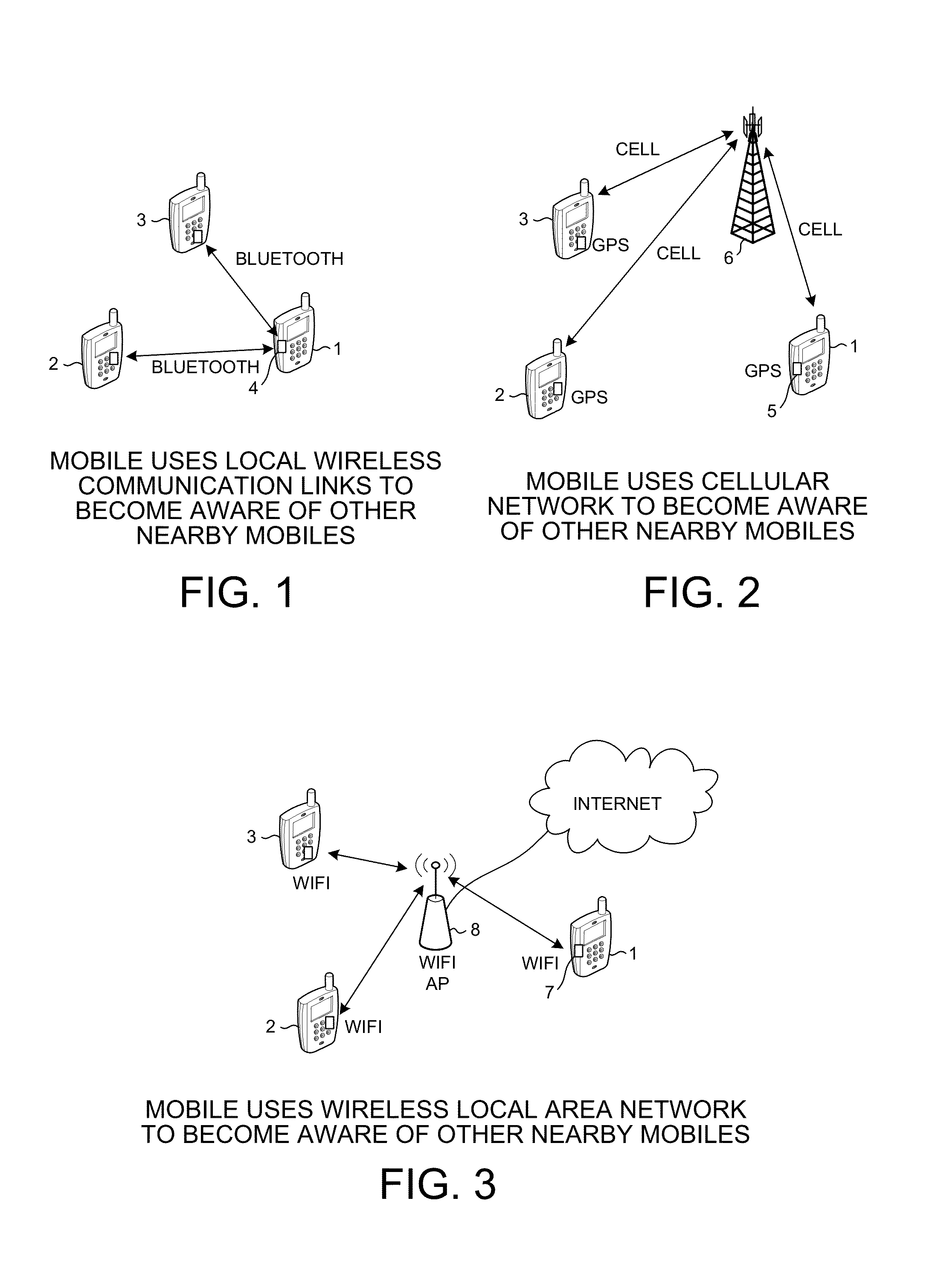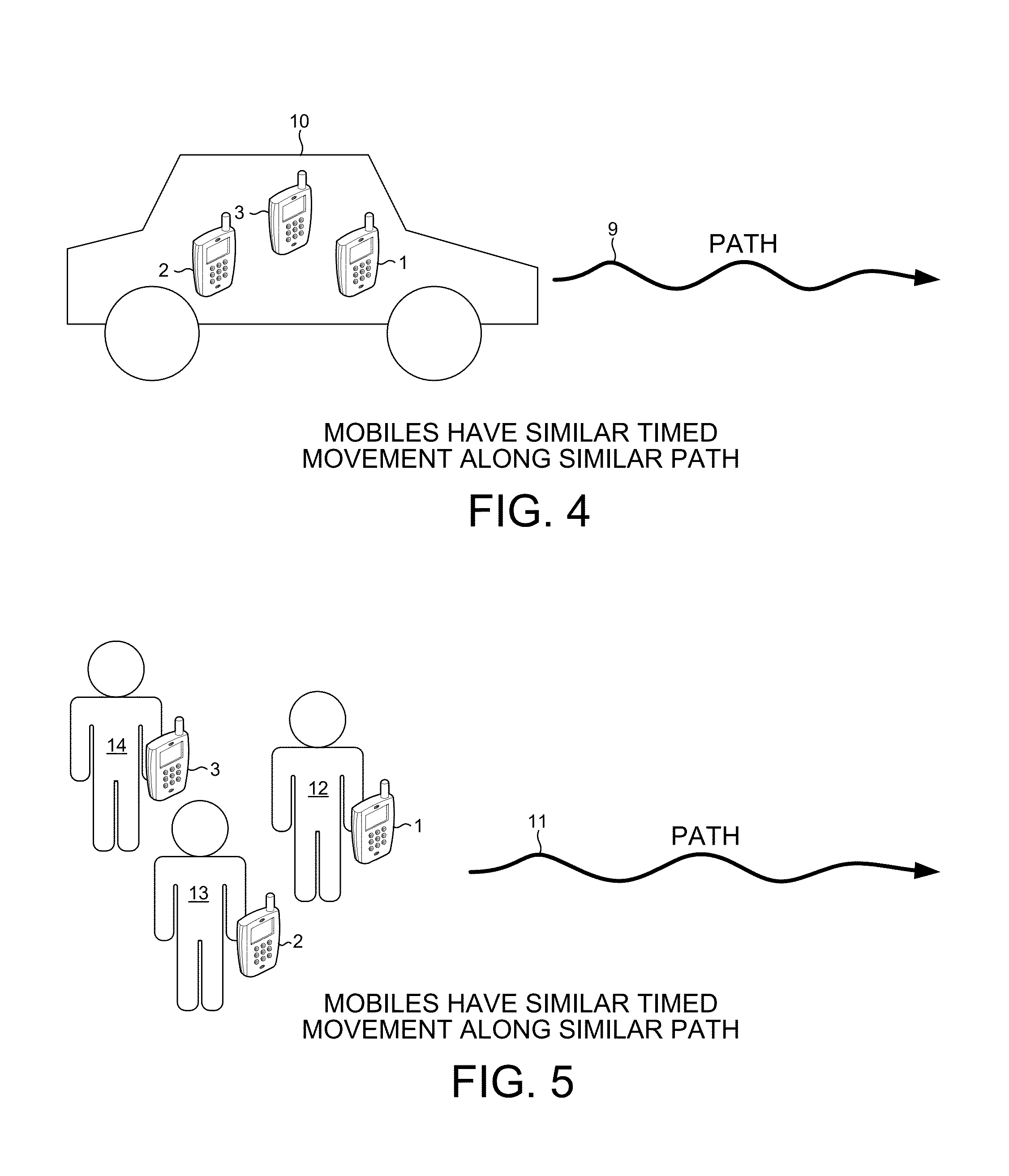Context-aware mobile incorporating presence of other mobiles into context
a mobile communication and context technology, applied in the field of context-aware mobile communication devices and systems, can solve the problems of raising privacy concerns, unable to solve many problems in common real-world operating situations, and expensive implementation of existing context-aware systems, and achieve the effect of inexpensive deployment on a cellular telephon
- Summary
- Abstract
- Description
- Claims
- Application Information
AI Technical Summary
Benefits of technology
Problems solved by technology
Method used
Image
Examples
Embodiment Construction
[0021]FIGS. 1, 2 and 3 show three ways that a first mobile communication device 1, in accordance with one novel aspect, can become aware of second mobile communication devices 2 and 3 located nearby the first mobile communication device 1. FIG. 1 illustrates how first mobile communication device 1 detects nearby second mobile communications devices 2 and 3 using Bluetooth communications. Each mobile communication device has a Bluetooth transceiver and communication functionality. Block 4 represents the Bluetooth communication functionality 4 within first mobile communication device 1. When device 1 enters the Bluetooth communication range of devices 2 and 3, periodic device inquiry broadcasts by device 1 are received by the other devices 2 and 3. Each other device responds to such a device inquiry by sending back a response. The response contains position information indicative of the position of the originator of the response. The response also contains an identifier that uniquely ...
PUM
 Login to View More
Login to View More Abstract
Description
Claims
Application Information
 Login to View More
Login to View More - R&D
- Intellectual Property
- Life Sciences
- Materials
- Tech Scout
- Unparalleled Data Quality
- Higher Quality Content
- 60% Fewer Hallucinations
Browse by: Latest US Patents, China's latest patents, Technical Efficacy Thesaurus, Application Domain, Technology Topic, Popular Technical Reports.
© 2025 PatSnap. All rights reserved.Legal|Privacy policy|Modern Slavery Act Transparency Statement|Sitemap|About US| Contact US: help@patsnap.com



